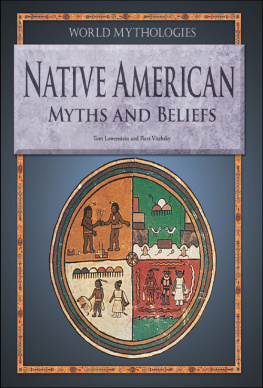How to Tell Kids the True Story of Native Americans
DEI for Parents
Trish Allison
Published by DEI for Parents, 2022.
While every precaution has been taken in the preparation of this book, the publisher assumes no responsibility for errors or omissions, or for damages resulting from the use of the information contained herein.
HOW TO TELL KIDS THE TRUE STORY OF NATIVE AMERICANS
First edition. August 6, 2022.
Copyright 2022 Trish Allison.
ISBN: 978-1393018599
Written by Trish Allison.
10 9 8 7 6 5 4 3 2 1
Also by Trish Allison
DEI for Parents
How to Support the Siblings of ASD Children
How to Explain Immigration to Kids
How to Explain Transgenderism to Kids Using Simple Words
How to Respond to Disability Curiosity from Kids
How to Talk to Kids About Poverty and Homelessness
How to Teach Boys to be Fair to Girls
How to Teach Girls They're Just as Worthy as Boys
How to Teach Kids Manners for ANY Religion
How to Teach Kids to be Kind to Gay People
How to Tell Kids the True Story of Native Americans
Watch for more at Trish Allisons site.
I naccurate and often offensive representations of Native Americans are deeply rooted in the American consciousness. Historically, schools have been teaching stereotypical portrayals of Native Americans as primitive, feather-wearing, savage murderers.
Like all stereotypes though, that characterization only applies to a handful of tribes and not the entire population. Our kids need to know the truth.
The truth is that President Andrew Jackson promoted and signed the Indian Removal Act in 1830. The Act led to the violent removal of the Cherokee Nation from the southern United States.
Many more tribes were also either forced from their native lands or massacred. Thousands of indigenous people died as a result. However, academic historians have painted that painful truth in a completely different light.
Communicating what really happened is becoming an imperative. But teaching children the real truth doesn't have to be harsh. The best approach is to offer kids breadcrumbs of information that enable them to reach their conclusions using their own language and at their own pace.
"For many teachers writing lesson plans, two main questions guide the decision-making: 'What do I want my students to be able to know and do as a result of this lesson?' and 'How can I design an activity in which students can search for the answers for themselves?'
Kids learn best when they feel like they own the information. By providing an accurate understanding of the enormous value that Native Americans have contributed to our culture, we can help the next generation formulate their own conclusions about the tragic experiences indigenous people have endured.
Thankfully, there's a movement underway to set the record straight for Native-American history. However, it could potentially take years for that effort to trickle down to academic history books. In the meantime, parents have a golden opportunity to imbue an entire generation with an appreciation of Native American culture and the respect that indigenous people merit.
Here are a few things to keep in mind as you're reading this guidebook:
- Most important, none of the steps are intended to be completed on a single, dictatorial occasion. The intent is to communicate the values described here on a casual basis over a period of time .
- Tips are written for parents of elementary-school children but theres a wide spectrum of maturity at every age. Some six-year-olds are mature way beyond their years and some ten-year-olds are learning at a different pace than their peers. That said, you know your child best regarding what is and isnt appropriate. (Note: All tips adhere to the child development guidelines published by the American Psychology Association.)
- The chapters are organized linearly, meaning it's best to read chapter one first and chapter five last. That said, if you have an immediate concern, feel free to read whichever chapter is the most pertinent at the time.
- Many of the tips assume that you and your child already share a fairly solid foundation of mutual communication. The tips are doable without this foundation, but they'll be much harder to implement successfully without it.
- It's so important to praise kids when they do something that's aligned with whatever you taught them. Be specific with your praise and look them in the eyes when you say it. Your approval means more than you think.
- It's true that children are heavily influenced by teachers and peers, but ultimately, the values they carry with them into adulthood are learned at home.
Finally, while theres no one-size-fits-all approach for teaching kids respect for Native Americans, this guidebook provides suggestions for scenarios that you can tailor to fit your own situation. The ultimate goal is to help you raise compassionate, non-biased, successful humans.
Chapter 1: Learn What Your Child Already Knows About Native Americans
T his chapter appears first because it's important for you to find out what your child already knows about Native Americans before you start guiding them. If you start saying things they already know, they're likely to tune out.
Maybe s/hes already learned about Native Americans in school, but the facts aren't accurate. Or maybe s/he knows next-to-nothing about Native Americans and youre starting with a blank slate. Either way, youll never know until you get them talking and really listen to their opinion.
To successfully guide your child through the maze of shifting awakenings about respect for Native Americans, its imperative to learn what your child already knows.
Step 1. Get your child to share their thoughts
The best way to get most children to open up is to say the minimum. If you use short phrases that reassure and prompt, you're more likely to get a response. The goal here is to get your child feeling comfortable enough to express how they feel.
The other crucial element is timing. Trying to start a conversation when your child is playing a game (digital or otherwise), reading, or watching TV almost never works. They'll probably find your presence intrusive before you even start talking. Plus, you won't have their full attention.
If it's not the right time, wait. As many parents know, timing is everything, especially when you're trying to understand your child's true feelings.


















